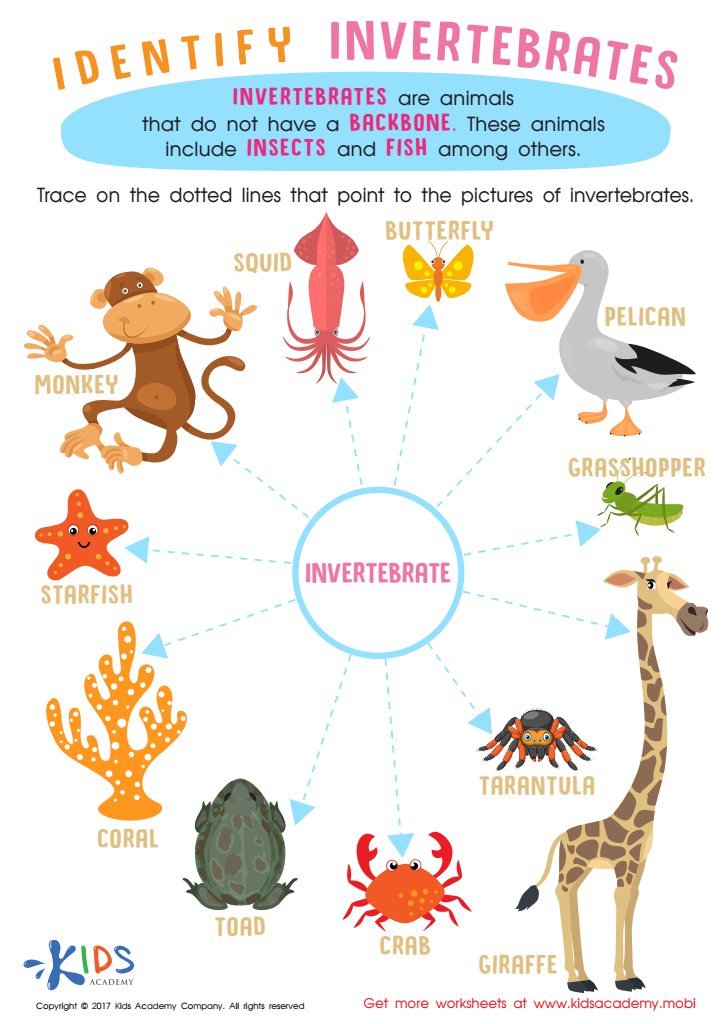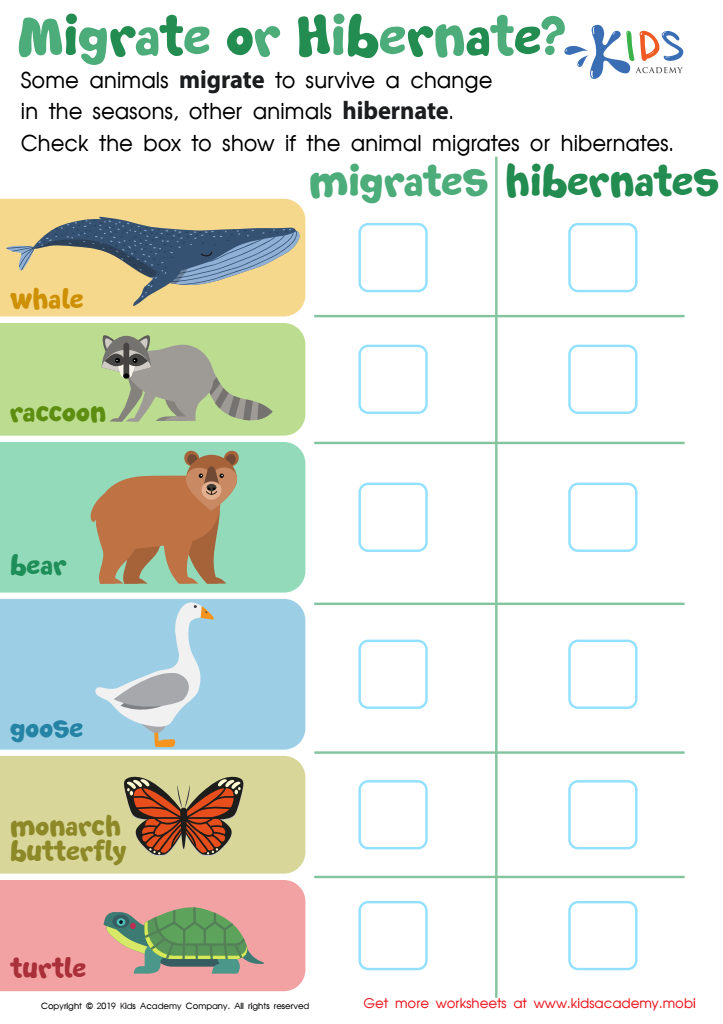Categorizing animals Normal Science Worksheets for Ages 5-9
3 filtered results
-
From - To
Introducing our "Categorizing Animals Normal Science Worksheets" for children ages 5-9, designed to make learning about the animal kingdom fun and engaging! These worksheets help young learners identify and categorize animals based on various traits such as habitat, habitat, and diet. With vibrant illustrations and interactive activities, children can enhance their critical thinking and analytical skills while exploring the diversity of wildlife. Perfect for classrooms or at-home learning, these worksheets encourage curiosity and foster a love for science in early education. Dive into the fascinating world of animals and watch your child discover their unique characteristics through enjoyable worksheets!


Studying Fossils Worksheet


Invertebrates Worksheet for Grade 3


Migrate or Hibernate? Worksheet
Categorizing animals is an important aspect of science education for children aged 5-9, as it lays the foundation for understanding biology and the natural world. For parents and teachers, this topic invites curiosity and engagement, fostering a sense of wonder about diverse living beings. When children learn to categorize animals into groups like mammals, birds, reptiles, and amphibians, they begin to appreciate the similarities and differences that exist within the animal kingdom.
This foundational knowledge not only enhances critical thinking skills but also promotes observation and reasoning. By observing traits such as skin type, habitat, or diet, children learn to make connections and predictions about animals, encouraging inquiry-based learning. Engaging in discussions about animal classifications broadens their vocabulary and ability to express their thoughts clearly.
Additionally, understanding animal categorization can instill a sense of responsibility for wildlife and the environment, encouraging conservation efforts from a young age. Overall, teaching young learners about how animals are categorized makes science relatable and fun, paving the way for future exploration and discovery. Ultimately, this knowledge equips children with essential skills and attitudes that shape their understanding of the world and their role within it.
 Assign to My Students
Assign to My Students


















